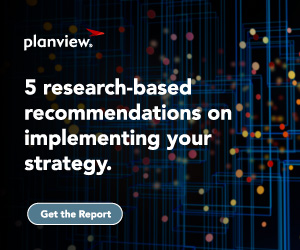
The business world is caught up in a whirlwind of change. How your enterprise responds to that change can determine whether your organization is an industry leader or another company stuck in the middle of the pack.
That’s because a defining trait of best-in-class organizations is their ability to quickly pivot in the face of changing market conditions, emerging and disruptive technology, and shifting customer demands. This change could be motivated by economic headwinds, political uncertainty, or even a change in internal priorities. What’s important is your ability to identify when to course correct and successfully execute pivots. This is instrumental in driving value and achieving better business outcomes.
Organizations that lack the business agility to pivot could risk falling behind and losing their competitive edge. In this post, we’ll talk about how you can create an organizational structure that promotes adaptability and business resiliency. You’ll learn how to use these accolades to achieve positive business outcomes and do so with less waste and greater efficiency.
But first, let’s look at some of the negative consequences that organizations may experience when they cannot adapt to change seamlessly.
How Inflexibility Undermines Your Ability to Drive Meaningful Value
If your organization struggles to adapt to internal and external changes, you could experience several challenges that inhibit your goal attainment and undermine your business outcomes.
Inflexibility can lead to wasted resources, missed opportunities, and strategic drift, among other issues. Understanding the consequences of inflexibility and how it affects your organization is the first step toward becoming more adaptable.
Below are some negative consequences that your enterprise could face if it’s unable to execute pivots quickly and efficiently.
1. Wasted resources
One of the most significant drawbacks of an inflexible enterprise is the waste of time, money, and resources being spent on initiatives that aren’t aligned with strategic goals.
Companies could invest heavily in projects that do not yield the desired outcomes, which can cause substantial financial losses and missed opportunities.
2. Missed opportunities
Opportunities can appear and disappear in the blink of an eye, so speed is a must when trying to take advantage of them. Enterprises that are slow at identifying and executing pivots may miss out – or worse, they could allow competitors to gain the upper hand. This can result in a loss of market share and a weakened competitive position.
3. Strategic drift
Strategic drift occurs when an organization fails to adapt its strategy to changing trends and customer demands. This can lead to a disconnect between the company’s goals and its actions, ultimately costing the organization time, money, resources, and opportunities.
Without the ability to pivot, enterprises risk drifting away from their strategic objectives, leading to poor performance and stagnation.
4. Poor change readiness
Inflexibility is often paired with poor change readiness. This may even stem from a lack of company culture that supports and prepares employees for organizational change. When change is met with resistance or confusion, it can slow down the entire organization, making it difficult to implement necessary pivots.
Business Agility Leads to Positive Change
As you can see, the consequences of inflexibility can seriously undermine your enterprise’s ability to drive value and achieve positive business outcomes. On the other hand, improving your business agility comes with a number of benefits that can position your business as a best-in-class organization. Some of those benefits include:
- Enhanced Market Responsiveness: Make strategic moves that put your enterprise in a favorable market position, capitalize on opportunities, and defend against emerging threats. This is crucial for maintaining your competitive edge and staying current with industry trends
- Increased Innovation: By being open to change and willing to pivot, your enterprise can explore new markets and driving innovation
- Stronger Alignment and Communication: Effective pivots require clear communication and alignment across the organization. Everyone, from top leadership to the teams doing the work, understands the company’s direction and strategic goals, and they’re capable of prioritizing and deprioritizing work as needed to achieve the best outcomes
By fostering a culture of adaptability, your organization will become better equipped to navigate change while staying focused on its strategic goals.
Become a Proactive, Adaptable Enterprise
Being able to identify and execute pivots quickly is a key differentiator that separates industry leaders from the rest of the pack. But achieving this is easier said than done.
After all, virtually every organization actively tries to solve pervasive challenges like wasted resources, missed opportunities, strategic drift, and poor change readiness. However, only the high performers are actually able to navigate these pitfalls. And their success comes out of fostering a culture of adaptability, leveraging data-driven decision-making, and ensuring strong alignment and communication.
Set your sights on becoming the next high-performing organization capable of evolving with change rather than catching up to it. Navigate uncertainty and disruptions without losing sight of your strategic goals.
Access our eBook, “Pivot at Speed: The Leader’s Guide to Planning Course Corrections,” to see which actionable steps you can take to keep your enterprise ahead of the curve.




